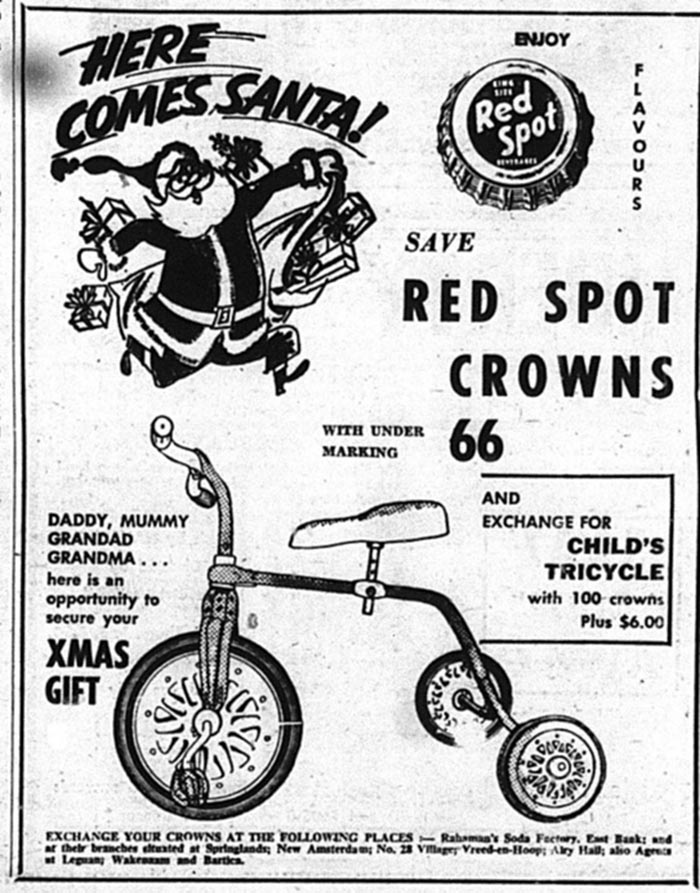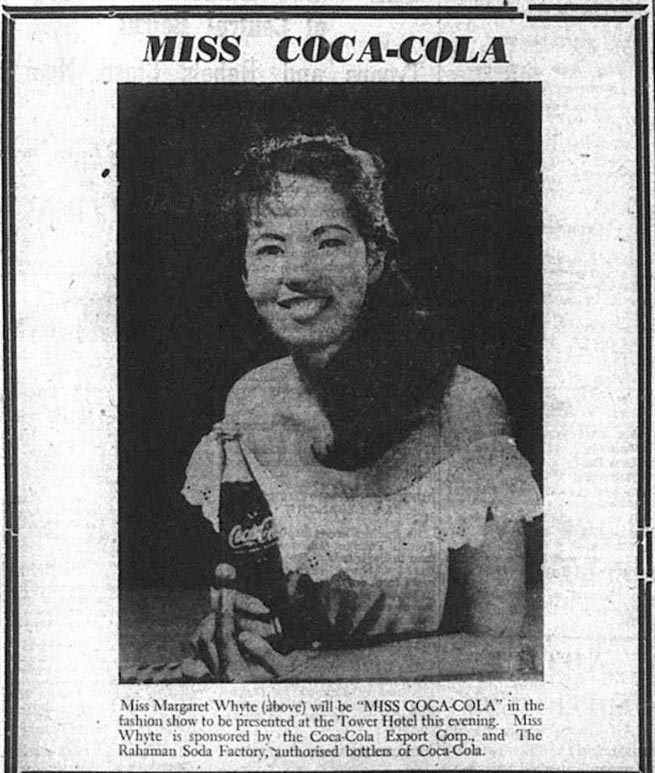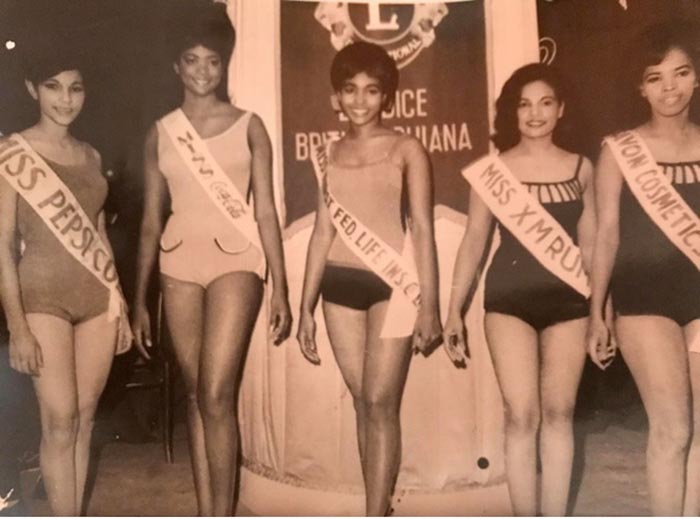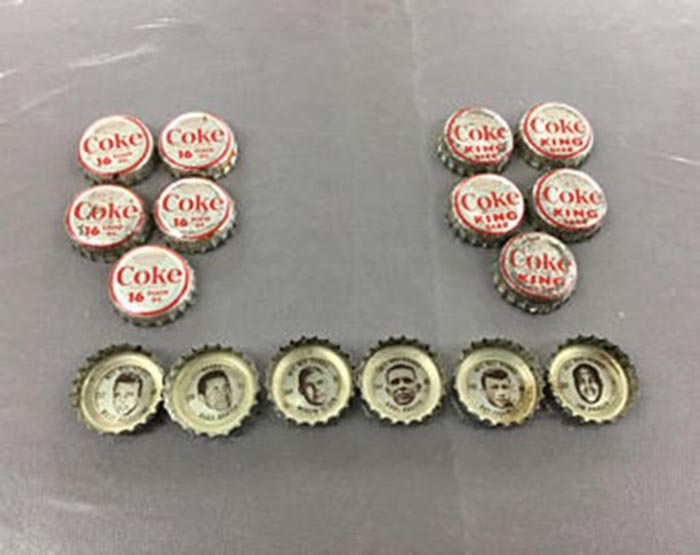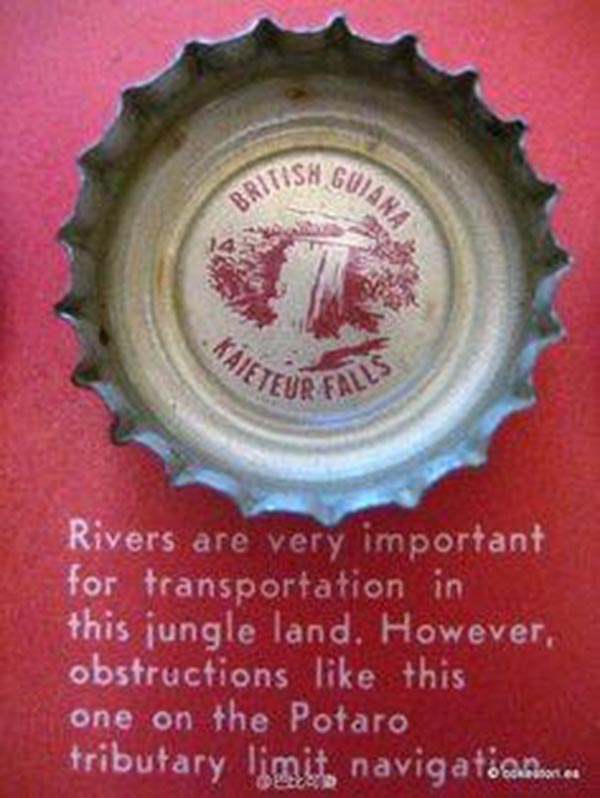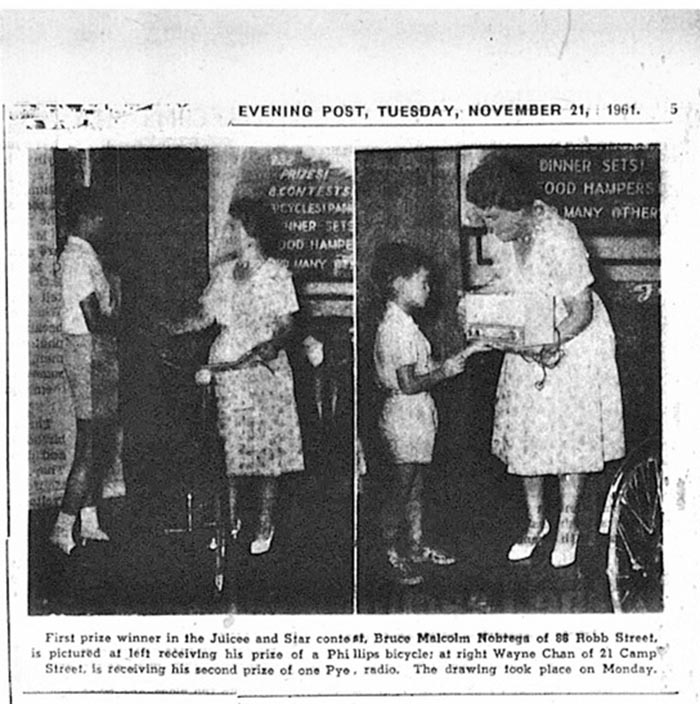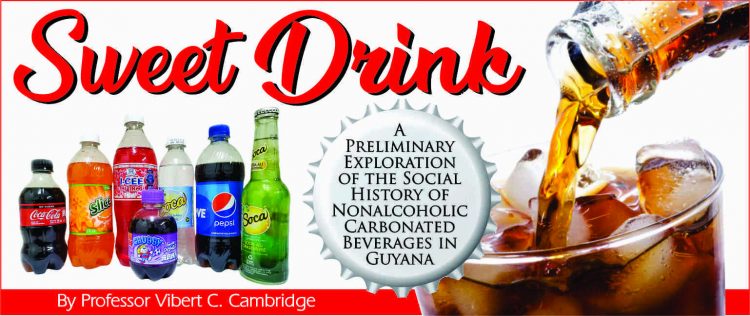
The Beauty Queens
The first beauty contest in British Guiana was organized in 1931 as part of the program of events to celebrate the centenary of the union of the colonies of Demerara, Berbice, and Essequibo to form British Guiana. The prize for the “most beautiful girl in the colony” was BG$30 and a gold medal. There were hints that the winner might go on to Hollywood and become a film star. The judges for the inaugural contest all came from the colony’s primarily British ruling class, and included “Colonel W.E. H. Bradburn, Inspector General of Police and Commandant of the Local [Military] Force; Capt. E. Burnett, M.C.; and Mesdames L. Clavier, A.G. King, and J.B. Smith.” Their decision for the inaugural contest was not a popular one. It was felt that Joan Sharples, a mixed-race contestant, should have been the winner, not the Portuguese, Genevieve De Abreu. For many, the ugly slip of racial prejudice based on the ideology of white supremacy and moderated by practices of comparative lightness was exposed. Despite the conflict, beauty contests continued in the colony. In 1932, the rules of the contest were modified to include “seven classes according to the races in the colony.” Notwithstanding this modification, the Guianese beauty contents remained one in which Caucasian attributes have tended to determine what was beautiful and attractive.
As mentioned earlier, in 1958, both Coca-Cola and Pepsi-Cola sponsored contestants in the Miss British Guiana competition. Miss Marjorie White was W&R’s Miss Coca-Cola. Miss Clyo Fernandez was DIH’s Miss Pepsi-Cola. The then new product, Banks Beer, also sponsored a contestant, Miss Joy Wong. The winner was Miss Pepsi-Cola. According to Trevor Pemberton, citing a newspaper article from that time:
“Never before in the history of Beauty Contests in British Guiana was a decision more popularly received than that to place the 1958 Miss Guiana Beauty Crown on the head of Miss Pepsi Cola, Miss Clyo Fernandez… And D’Aguiar Bros, bottlers of Pepsi Cola, made capital of it by launching a big advertising campaign from the next day… Runner up: Joy Wong (Miss Banks Beer).”
There were several things different in the colony’s social life in 1958. By 1958, the Miss British Guiana beauty contest was an important annual moment in the colony’s influential urban social calendar. Miss British Guiana enjoyed high social status. The Miss British Guiana competition in 1958 was not insensitive to amplifications of calls for Guyanization, not only in political and economic life, but also in cultural life. In June 1958, Hon. Brindley Horatio Benn, the Minister of Community Development and Education in the PPP government, established a committee of eminent Guianese “to consider and make recommendations for holding a Guianese History and Culture Week once a year,” and requiring that “[t]he event should be calculated to educate Guyanese about their own country and inspire them to work harder for its progress.” The committee, chaired by A.J. Seymour, submitted a detailed report in August 1958. The theme for the first National History and Culture Week, held from October 20 – 24, 1958, was “One people, one nation, one destiny.” In 1958, it was clear that political independence was on the horizon. The question was: When?
As previously mentioned, the organizers and judges of the inaugural beauty contest in 1931 were white, British, and mostly expatriate. In 1958, the judges were all urban, native-born people of color, and urban residents. Among the judges was the successful lawyer Lionel Luckhoo, who was of Indian ancestry. The host was popular businessman Harry Kawall, also of Indian ancestry. Among the special guests were the mayor of Georgetown, Mr. Claude Merriman, and Miss Sarah Lou Harris. Mayor Merriman was of African ancestry. Miss Sara Lou Harris, who was also of African ancestry, was born in North Carolina, USA. These personalities all featured in independence and early post-independence politics. These members of the urban, multiethnic middle class represented the societal shifts that included the emergence of a new ruling class.
Another major event in I958 was Fashion Extravaganza, a fashion show organized by Beryl Pereira at the Hotel Tower in the newly renovated Cactus Club, whose decor was described as “chic and sophisticated.” An early review stated, “The Cactus Club must now rank as one of the smartest Night Clubs in the West Indies.” This is indicative of the efforts to make British Guiana an important destination in the flourishing West Indian tourism industry. By the late 1950s, tourism was an important sector in the economies of most British West Indian colonies.
According to Godfrey Chin, Princess Margaret’s fashion statements during her 1958 visit to the colony engendered “a ‘tsunami’ of interest by [British Guianese] young ladies for modern fashions and daring fastidious Parisian-cuts.” The Fashion Extravaganza was organized not only to showcase contemporary fashion but, more important, to demonstrate Guyanese skill in runway modelling. Beryl Pereira invited her friend Sara Lou Harris, the top African American U.S. model, to visit British Guiana to participate in Fashion Extravaganza which coincided with the 1958 beauty contest. She was a special guest at the 1958 Miss British Guiana beauty contest. Sara Lou Harris later married John Carter and became an influential participant in Guyana’s pre-and post-independence social and cultural life.
Coca-Cola, like Pepsi and other commercial businesses, continued to sponsor contestants in beauty contests. As was the case with its entrant in the Lions of Berbice Competition (ca. 1958 or 1959), the subsequent entrants looked like the colony’s black and brown people, critical sweet-drink consumers. Miss British Guiana (later, Miss Guyana) titleholders became important elements in Guyana’s public diplomacy.
Guyanese on Facebook have continually referred to the Miss Guyana titleholders who impressed the world in Guyana’s early post-independence years. They include Umbilita VanSlytman, 1966; Shakira Baksh, 1967; Adrienne (Alexis) Harris, 1968; Pamela Lord, 1969; and Jennifer Dianne Evan Wong, 1970. Guyanese on Facebook also remember Lady Sara Lou Carter (née Harris), whose husband, Sir John Carter, served as Guyana’s ambassador to the United States (1966–1970), High Commissioner in the United Kingdom (1970–1976), and High Commissioner in Jamaica (1981–1983). As a 1964 New York Times article noted, “The Ambassador’s wife is an Ambassador, Too.”
Bottle cap and proof of purchase competitions
The advertising campaigns created awareness, but it was the marketing campaigns that clinched the deal. Like the advertising materials, many of the memorable marketing campaigns during the “sweet drink wars” had their origins in the United States. D’Aguiar Bros, later Banks DIH was in the forefront in the use of “bottle cap” aka “crown cork” competitions in British Guiana. Prizes ranging from houses to “branded trinkets” were offered. Again, unfortunately, because of the loss of the Banks DIH records, I am unable to be granular in our exploration of DIH’s “crown cork” competitions. It would have been nice if in this installment, I was able to list the name of the winner of the first competition with a house as first prize and comment on the current state of that property. Unfortunately, most of the Guyana story is not digitized and expensive to access.
Fortunately, these competitions are still present in Guyanese memory. Three stand out: “Supermen of History” (1959), “Supermen of Science” (circa 1960s) and “Know Your World (1970). The 2020 Facebook conversations were useful in reconstructing how the society responded to these marketing campaigns, especially the “Superman of History” competition. I can still recall the excitement associated with the “Supermen of History” competition in Georgetown. The possibility of winning a house from collecting bottle caps was an attractive opportunity for the urban working and lower middle classes. It seemed that all you needed to do was to fill a double-sided album with about 100 bottle caps, each featuring a different personality and insert them in the album which had holes related to each of the personalities.
In the 1950s, the inside of the metal bottle caps aka crown cork had a lining of cork. For the “Superman of History” competition, the portrait of a historical personality was printed on the metal under the lining of cork. There was excitement associated with lifting that thin cork layer. Were you going to find one of the hard-to-find portraits? Or was it just another one of the easy-to-get ones? Was it going to be an Ernest Shackleton, William of Orange, Horatio Nelson, or another Francis Drake? An “underground” market emerged for the “hard-to-find” portraits. In this market, “swapping” and sales transpired.
The rules of the competition allowed you to enter as many completed albums as possible. The novelty of the campaign and the prizes, especially the first prize, stimulated the purchase and consumption of DIH products. Because of the lost records, one is unable to report on the volume of sales associated with this competition. In my home there was increased consumption of aerated drinks bottled by DIH. Hitherto, “swank” dominated. Aerated drinks were occasional and limited to holidays, birthdays, and rarely during the week. During the period of the “Supermen of History” competition, “sweet drink” consumption rose to a few bottles per day. As one participant in the Facebook conversations noted, the competition was the start of his “sweet drink addiction.” Clearly the tactic was a winner, for in December 1961, the company launched another bottle cap competition. It was limited in scale. For a few bottle caps one was able to redeem “Free Christmas Gifts.” In addition to stimulating increased consumption, these competitions also served an educational function. One participant in the 2020 Facebook conversation reported about learning about famous personalities such as Hannibal for the first time from the “Supermen of History” competition and developing an interest in the history of science from the “Supermen of Science” competition. In 1970, Banks DIH launched the “Know Your World” competition, this one was on the scale of the “Supermen of History” and the first prize was again a house. In 2018, Banks DIH resuscitated the model with the VITAMALT Color Crown Collection.
As stated earlier, DIH may have been the most active in the “bottle cap”/” crown cork” competitions, but it was it was not a solo player. Weiting and Richter’s CSID, the bottlers of Juicee, Star, and at one time Coca-Cola and 7UP, also had one or more of these crown cork competitions. In 1961, there was the Juicee and Star Prize Competition. Again, I wished I had access to data that would allow for more granularity about W&R’s bottle cap/crown cork competitions. The W&R “sweet drink” records are fugitive!
Sometime during the late 1960s, the Rahaman Soda Factory organized a Christmas promotion. With 100 crowns plus $6.00, the prize was a tricycle. In addition to stimulating consumption, these competitions were also a source of additional income. In some instances, participants in these competitions had to purchase the albums and pay a small entry fee.
At the apex of the Banks DIH marketing innovations were the “Tie Ins.” We will look at this unique campaign in the next installment.
SELECTED REFERENCES
Cambridge, V. Musical Life in Guyana. Jackson, Mississippi: University Press of Mississippi, 2015.
Chin, G. Nostalgia 571: “Our Queens Go Forth.” Available online at Guyanese Online: https://guyaneseonline.net/2011/10/13/nostalgia-571-%E2%80%93-0ur-%E2%80%98queens-go-forth/?fbclid=IwAR1VuUrEKI6OHQmrCfn9a7E_-fViHnXlERX3Iy5J3uZjgFHkzVZl2cBbYHs
Chin, G. Nostalgias: Golden Memories of Guyana 1940 to 1980. Gotha, FL: Chico Khan Publishing, 2007.
Pemberton, T. “No controversies at 1958 Beauty Contest.” Stabroek News, December 4, 2013. Available online at: https://www.stabroeknews.com/2013/12/04/opinion/letters/controversies-1958-beauty-pageant/?fbclid=IwAR22nU7mrVmc4HzeETG3KJYcjFpwmvT4ApXIQ4PixkQNTPNdwY3LydIgsL8 Accessed on June 12, 2020 at 2:41 P.M.
Pepsi’s “Treasure Tops: Sweepstakes and Contests, 1948” (http://treasure-top.com/?fbclid=IwAR0VNTRRQ6k2VoG4qNzMdP9Q8KwsmEuX3B1Qu9xWXVIwaOb_Hjrx8sYZQmU
“My bottle cap collection” (featuring Coca Cola’s “Tour the World”) https://www.collectorsweekly.com/stories/85700-my-bottle-cap-collection?fbclid=IwAR3WwxZ3h2JtLlpXxXubdszuadkrt6sxRGvQpERHkCZtkkktMGq2zHOAYVQ
Rinker H. “Coca Cola Bottle-Cap Promotions Date Back to the 1950s and “60s.” The Morning Call, January 13, 2002. https://www.mcall.com/news/mc-xpm-2002-01-13-3740182-story.html?fbclid=IwAR3TW5iVMd_xU6wT2RHBiH5NVYjasfIOiv34PfeauiV43xT9HvueOlnwLfU
Cambridge, V. Facebook conversation, “The Geography of ‘Sweet Drinks’ in Guyana” launched April 21, 2020. https://www.facebook.com/vibert.cambridge/posts/10157045271290849?comment_id=10158058760755849¬if_id=1624887773436591¬if_t=feed_comment&ref=notif
